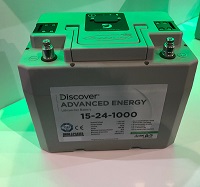Batteries and Chargers
Lead-acid batteries are the accepted standard for energy storage systems, and they are straight-forward to use under normal conditions. However, not all lead-acid batteries are the same and some are more suited to a particular application than others.
Lead-acid batteries are distinguished mainly by plate construction and in the way the electrolyte is managed, and generally fall into one of three main categories:
those which hold the electrolyte captive (gelled or Absorbed Glass Mat (AGM) types);
those which limit electrolyte loss (sealed vent ’maintenance free’ types);
and those that allow refill of lost electrolyte (open vented types with refill caps like Starting, Lighting and Ignition (SLI) or Traction batteries).
For 4×4 and leisure use most batteries fall into the maintenance free category. These are available in 3 types:
Cranking or starting: used for engine starting, made for high current draw for a short period, typically should not be discharged more than about 10%, i.e. don’t go below 90% state of charge.
Often referred to a sealed maintenance free batteries, these do in fact have a small vent, which can allow gas to escape. The battery should always be kept upright, as it will leak electrolyte (Acid) if left on it’s side or upside down for more than a few seconds. Care should therefore be taken to mount the battery in a spill proof container to contain any acid which may escape. These batteries should never be opened, and it is not possible to top up the electrolyte (Acid).
Deep cycle: used for auxiliary equipment (fridges, lights, etc), made for low current draw over a long period, typically should not be discharged more than about 50%, i.e. don’t go below 50% state of charge.
High cycle: used for standby (ups), typically should not be discharged more than about 25%, i.e. don’t go below 75% state of charge. However certain brands have high cranking ability and can easily be used in place of a cranking battery. Because they can also handle discharging better than a cranking battery this is a good option to also run some auxiliary equipment to relieve the load on the deep cycle battery.
To maximize battery life, the correct battery should be chosen.





